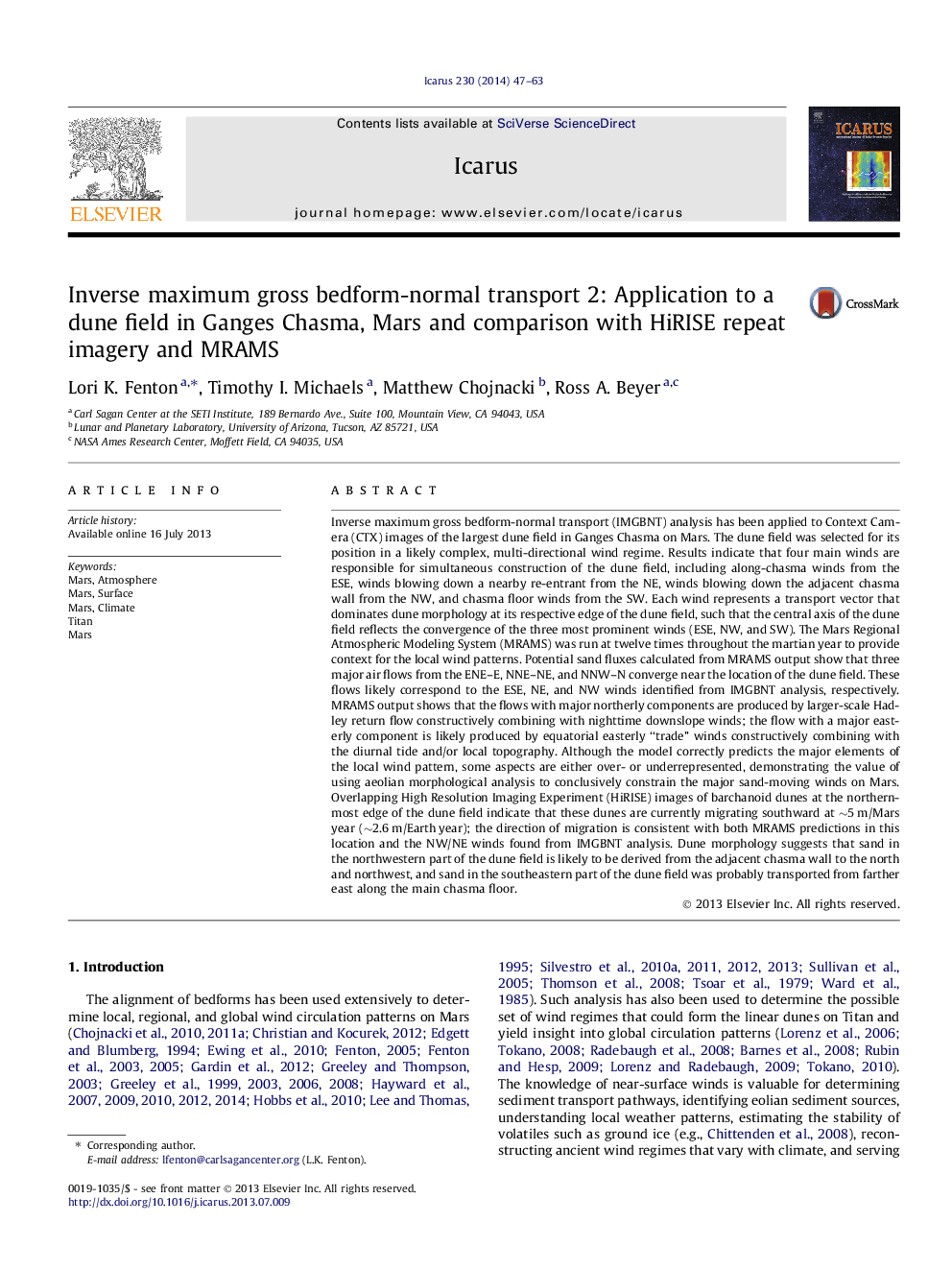| کد مقاله | کد نشریه | سال انتشار | مقاله انگلیسی | نسخه تمام متن |
|---|---|---|---|---|
| 1773145 | 1523560 | 2014 | 17 صفحه PDF | دانلود رایگان |

• Major sand-moving winds have been identified in Ganges Chasma on Mars.
• Transport paths determined from images match those determined from other techniques.
• The main sand-moving winds in Ganges Chasma, Mars are driven by large circulations.
Inverse maximum gross bedform-normal transport (IMGBNT) analysis has been applied to Context Camera (CTX) images of the largest dune field in Ganges Chasma on Mars. The dune field was selected for its position in a likely complex, multi-directional wind regime. Results indicate that four main winds are responsible for simultaneous construction of the dune field, including along-chasma winds from the ESE, winds blowing down a nearby re-entrant from the NE, winds blowing down the adjacent chasma wall from the NW, and chasma floor winds from the SW. Each wind represents a transport vector that dominates dune morphology at its respective edge of the dune field, such that the central axis of the dune field reflects the convergence of the three most prominent winds (ESE, NW, and SW). The Mars Regional Atmospheric Modeling System (MRAMS) was run at twelve times throughout the martian year to provide context for the local wind patterns. Potential sand fluxes calculated from MRAMS output show that three major air flows from the ENE–E, NNE–NE, and NNW–N converge near the location of the dune field. These flows likely correspond to the ESE, NE, and NW winds identified from IMGBNT analysis, respectively. MRAMS output shows that the flows with major northerly components are produced by larger-scale Hadley return flow constructively combining with nighttime downslope winds; the flow with a major easterly component is likely produced by equatorial easterly “trade” winds constructively combining with the diurnal tide and/or local topography. Although the model correctly predicts the major elements of the local wind pattern, some aspects are either over- or underrepresented, demonstrating the value of using aeolian morphological analysis to conclusively constrain the major sand-moving winds on Mars. Overlapping High Resolution Imaging Experiment (HiRISE) images of barchanoid dunes at the northernmost edge of the dune field indicate that these dunes are currently migrating southward at ∼5 m/Mars year (∼2.6 m/Earth year); the direction of migration is consistent with both MRAMS predictions in this location and the NW/NE winds found from IMGBNT analysis. Dune morphology suggests that sand in the northwestern part of the dune field is likely to be derived from the adjacent chasma wall to the north and northwest, and sand in the southeastern part of the dune field was probably transported from farther east along the main chasma floor.
Journal: Icarus - Volume 230, 15 February 2014, Pages 47–63